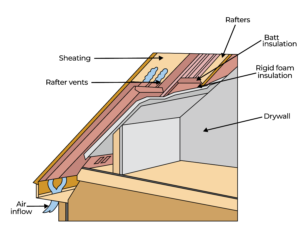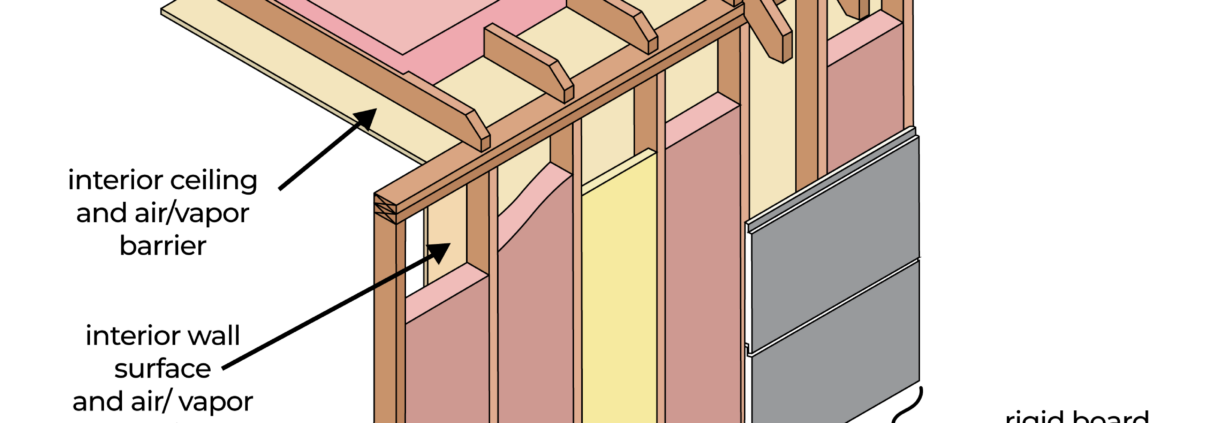Attic Insulation
Providing your attic a little more care means you are going to experience several benefits in the near future. No matter whether you are building a new home or renovating the existing one, insulating your attic can greatly reduce your cooling and heating bills. In fact, most energy-efficient HVAC systems can’t even function at their maximum efficiency without proper attic insulation.
Nowadays, most homeowners like you are concerned about maintaining a comfortable home environment all year round. But if the temperature varies from room to room or from location to location, it will surely affect the comfort level of your home. If you are currently experiencing the same, you should consider insulating your attic as soon as possible. No doubt, this will ensure that the indoor temperature of your home remains stable all over the year without being affected by extreme outdoor weather.
Although attic insulation is not an extensive renovation project, it requires great knowledge and expertise. So, it’s important to have sound knowledge so that you can make informed decisions while purchasing attic insulation or maintaining that. In this article, we will discuss everything you need to know about attic insulation.
Importance of Attic Insulation
It is hard to ignore the importance of attic insulation when it comes to making your home more energy-efficient. Your attic insulation serves the purpose of preventing heat transfer between your house’s indoor and outdoor spaces. So, it is capable of protecting your house from extreme temperatures in colder and warmer months.
In fact, most of the cold and hot air entering and leaving the homes travels through the attic. That is why you need to ensure that your attic is properly insulated. No doubt, the attic bears the burden of the heat of the sun throughout the year. But if your home is missing proper attic insulation, you may lose up to 85% of its heat through the attic in winter.
As per the EPA, insulating your attic can save you 15% on energy bills on average. So, you can easily get an idea of how much additional energy your appliances will consume if you don’t insulate them. Apart from that, attic insulation greatly reduces the downside of weather fluctuations in your home. As a result, the burden on your HVAC is minimized as attic insulation can minimize all the impacts of weather fluctuations on your home.
In addition, a well-insulated attic helps to prevent pollution from entering your home, which helps maintain your home’s air quality. So if you have a poorly-insulated attic, it can allow outdoor pollutants to enter, which affects your whole house’s air quality. Furthermore, a properly insulated attic is capable of preventing moisture accumulation in your home.
Benefits of Attic Insulation
A properly insulated attic can help every homeowner in a number of ways. No doubt, the most significant benefit is offering them a huge difference in your energy bill, whatever the season may be. But apart from that, there are many benefits of insulating an attic space. Let’s explore how insulating your attic space can help you when it comes to the comfort of your home.
- Saves on Your Energy Bill
Homeowners, who are concerned about their increasing energy bill for heating/cooling needs, can be hugely benefited from adding insulation to their attic. The reason behind it is pretty simple. Heats flow into your house during summer days and move out of your house in the winter. When you properly insulate your attic space, it can restrict this heat transfer. As a result, you can control your electricity consumption as you need less energy to meet all your heating and cooling needs. And it will reflect in your energy bills.
- Controls Air Leakage
Insulating your attic space means limiting the air leakage in your home. Frankly speaking, when you insulate your attic space, you can restrict most the air leakage from the roofs, ceilings, and walls. This results in reducing electricity consumption and cost. In fact, it is estimated that you can reduce almost 40% of home heating and cooling costs by installing proper attic insulation.
- Offering Better Air Quality
Insulating your attic space with proper insulation can help you to prevent the harmful effects of outdoor air pollutants. Air pollutants like radon, dirt, smoke, or mold exist in outdoor spaces and enter your home through attic vents. And some of these pollutants lead to respiratory problems, headaches, and fatigue.
- Keeps Your Indoor Temperature Stable
It is common for homeowners to experience temperature fluctuation in different indoor spaces of their homes if they have old and damaged insulation. They might experience that rooms upstairs may be hotter than the rooms downstairs. Insulating your attic space can be the best bet to tackle this problem and keep your home’s temperature comfortable throughout the year.
- Increase Your Home’s Value
Upgrading the old attic or installing a new one can increase the overall value of your home. Insulating your attic space gives home buyers the assurance of reduced energy costs, a comfortable home environment, and advanced roof protection. So, it can be considered a strong selling point.
Factors to be Considered While Buying Attic Insulation for Your Home
When it comes to insulating your attic space, there are many factors to consider. But the most important factor is the maximum thermal performance or R-value of the material you have chosen for attic insulation. The term R-value refers to the maximum ability of a material to resist heat transfer, and it is measured in the per-inch unit. Therefore, the higher the value is, it is much better in performance.
Nowadays, different types of attic insulations are available in the marketplace depending on factors like R-value, eco-friendliness, accessibility, durability, and many more things. These include:
- Blow-in Insulation
- Spray Foam Insulation
- Batt Insulation
- Structural Insulated Panels
- Loose-Fill Insulation
- Reflective Insulation
However, the most common types of materials used for attic insulation are fiberglass, foam board, and mineral wool.

If you are living in a home with a finished attic, it means your attic space is already partially insulated. However, it is always better to increase the R-value in case your home is having an older attic. If you’re like most homeowners, you’re probably focused on insulating your walls and ceilings to improve energy efficiency and lower your utility bills. But there’s one area of your home that you might be overlooking: your attic hatch. Your attic hatch is the access point to your attic, and it’s often a significant source of energy loss in many homes.
Installing new attic insulation or upgrading the existing insulation is never a walk in the park. Without proper experience, it may result in faulty attic insulation. So, while choosing the DIY approach, you might be unable to properly insulate every corner of your attic spaces. Sometimes you might use the right type of insulation materials but follow the wrong method. So, it is always better to contact a professional contractor to insulate your attic space for complete peace of mind.
The Problem with Insulating Against Rafters
When it comes to insulating your home, one common approach is to install insulation against the rafters of your attic. While this may seem like a good idea, there are some potential problems that homeowners should be aware of. Here’s a guide to the problems with insulating against rafters:
- Condensation: One of the biggest problems with insulating against rafters is the potential for condensation to occur. If warm, moist air from your home gets trapped between the insulation and the roof sheathing, it can cause condensation to form. This can lead to moisture damage, mold growth, and other moisture-related problems.
- Poor ventilation: Insulating against rafters can also impede proper ventilation in your attic. Good ventilation is important for preventing moisture buildup and maintaining good indoor air quality. When insulation is installed against the rafters, it can block the flow of air and prevent proper ventilation.
- Reduced effectiveness: Insulating against rafters may also reduce the effectiveness of your insulation. When insulation is installed in the attic floor, it helps to keep the warm air inside your home from escaping into the attic. But when insulation is installed against the rafters, it can allow warm air to escape through the roof. This can reduce the effectiveness of your insulation and lead to higher energy bills.
To encourage proper air circulation and ventilation in the attic, components called attic baffles or rafter vents are installed. They are usually made of rigid foam, plastic, or cardboard and placed between roof rafters to form a gap that enables air to flow between the soffit vents and the roof vents.
Attic baffles serve to prevent insulation from obstructing air movement and prevent moisture accumulation that can cause mold and decay. By facilitating air circulation and ventilation, they help to regulate temperature and increase energy efficiency, ultimately prolonging the roof’s lifespan.

Final Thoughts
Proper insulation of your attic hatch is an important step in improving the energy efficiency and comfort of your home. By preventing heat loss, reducing energy consumption, and improving indoor air quality, insulation can provide a number of benefits for homeowners. Whether you’re looking to save money on your energy bills, improve the value of your home, or simply increase your comfort, insulating your attic hatch is a simple and effective solution.




